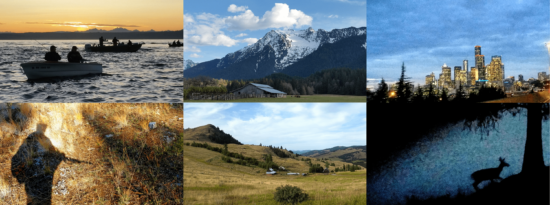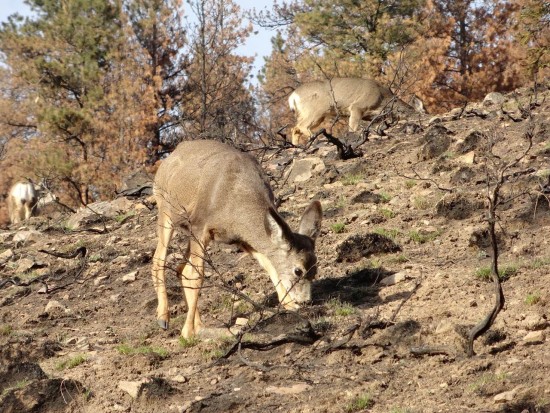
Washington Lawmakers Propose General Fund Fixes For WDFW Budget
WDFW leaders say that yesterday’s budget proposals from Washington lawmakers get them closer to full funding in the short term and that they will work with representatives and senators towards that end in the coming weeks.

“Of our $26 million supplemental operating budget request, the House proposal provides $24 million and the Senate proposal provides $21 million,” Nate Pamplin, agency director of budget and government affairs, stated in an all-staff email sent out Monday afternoon.
Of note, none of the money would come from either a fee increase or reinstated Columbia River endorsement, which Gov. Jay Inslee had again floated in December following the defeat of both last year.
“Both budget proposals primarily use State General Fund and neither rely on a recreational license fee increase,” Pamplin confirmed.
Organizations that have been working with WDFW on budget and policy issues in recent years considered the proposals “good but not perfect,” yet are offering the agency and lawmakers encouragement to get a final supplementary funding package over the finish line.
The release of the proposals from Democratic majority leaders marks the “two-thirds” point of the short legislative session and “serve as initial starting points for several weeks of negotiation,” according to Pamplin.
He said that the Senate’s operating budget for WDFW is otherwise similar to the $23.8 million one Inslee rolled out before the session began in that it “mostly funds” agency work through this fiscal year while it also “creates gaps” the following two years, and the House side “gets us closer to full funding in the next biennium” but also fails to fully fund the agency in the short term.
As you might expect when two bodies approach the same situation, there are similarities between the proposals but also sharp differences in some cases.
Pamplin reported that both budgets include one-time money for continuing to suppress invasive northern pike in Lake Roosevelt ($357,000), develop alternatives to gillnets as well as draft a plan to buy back commercial licenses in the Lower Columbia ($573,000), and recover fire-seared habitat on wildlife areas ($517,000).

Both chambers also provide funding for orca patrols in Central and South Sound ($225,000) but on an ongoing basis, meaning WDFW wouldn’t have to come back to lawmakers in a year for another hit as it must with one-time funding.
However, they split on paying for required monitoring of Puget Sound salmon and Skagit catch-and-release steelhead fisheries ($1.13 million), with the House making it an ongoing item while the Senate provides only for the current budget biennium, Pamplin said.
Given all the Endangered Species Act listing, federal overseers mandate fishing seasons be closely observed and that requires inseason creel samplers, test fishing and number crunching.
The Senate also mandates putting an observer onboard boats that are gillnetting in the Columbia to watch how many wild fish come over the side.
Indeed, not everything was on budget writers’ radar screens in the same way.
With a permit to remove sea lions in the Columbia River to benefit threatened salmon and steelhead now under review, the House version includes a one-time infusion of $924,000 to support that, but the Senate’s doesn’t include any money, Pamplin wrote.
There’s also one-time money from the lower chamber to map and analyze fish passage barriers as the state prioritizes removing those that block salmon and steelhead coming out of a recently upheld federal court case ($142,000), but none from the upper, he stated.

The upper chamber provides single-year appropriations for Skagit Valley elk management and fencing ($300,000), helping those filing for hydraulic permits, and to study whether an Alaska-style pink and chum salmon hatchery system model would be feasible in Washington ($750,000), while the House does not, he reported.
The House funds Lake Washington Ship Canal predation studies — initial testing last year suggested yellow perch and rock bass were impacting outmigrating smolts more than bass.
Senators also want to convene a joint state-federal-tribal-science board council to advise fishery comanagers before they make decisions on salmon and steelhead management, though they didn’t provide any money for it, Pamplin’s write-up said.
As for proposed Capital Budgets — money that goes towards construction and acquisition — both chambers do provide money for WDFW’s Soos Creek Hatchery on the Green River.
However, the House would fund all $2.9 million that WDFW requested to restore the facility built in 1901 and which produces 7.7 million fall Chinook and coho, the Senate only $1.8 million.
Both chambers provide $972,000 to design and permit raising the agency’s Wiley Slough dike near the mouth of the Skagit to protect nearby farms and homes.
But WDFW’s $1 million request to start planning how to boost hatchery salmon production at state facilities to benefit orcas — and anglers — wasn’t included by either the House or Senate, though Pamplin believes there’s some hope it will be partially funded “as a line-item in the operating budget.”
Puget Sound’s killer whales are simply going to die out if more Chinook are not made available to them asap, and the best way to do that will be through sharply spiked hatchery releases as decades-long habitat improvements slowly come on line and wild fish populations increase gradually over the long haul, assuming no new environmental catastrophes like The Blob occur.

In his all-staff message, Pamplin said WDFW’s strategy is to now work with budget writers in both chambers.
In the House that’s “to try to fix the gap in the current biennium to preserve our current work and staff,” he stated, and in the Senate “to increase the amount of ongoing appropriations in the next biennium, similar to the way the budget is constructed in the House proposal.”
For this session, WDFW consciously avoided running another fee bill and Pamplin et al were surprised when Inslee proposed one.
After the last one failed and the Columbia endorsement wasn’t extended following a controversial Fish and Wildlfie Commission vote, the agency took the tack that since much of its work also benefits the state as a whole, it would ask for money from the General Fund instead.
WDFW’s initial request included $12.9 million of those sales tax dollars to cover “maintenance level” increases such as lawmakers’ unfunded cost-of-living-allowance bump for biologists, wardens and others; $6.8 million for “emergent needs” such as items recently heaped on WDFW’s plate; and $6.6 million for “at-risk” work at select hatcheries, monitoring fisheries, customer service and other items.
During the Great Recession, WDFW’s General Fund contributions were cut sharply and have yet to fully return to previous levels — even as the state’s economy booms. Washington state natural resource agencies receive less than 1 percent of General Fund revenues.
While it’s commonly believed among sportsmen that license fees are perpetually rising, in fact there has not been an increase in the cost of a combo, deer tag or other fishing and hunting license since 2011, and this week’s proposals from legislators all but ensures there won’t be one in 2020 either.
Coming out of last year’s legislative session, in which WDFW faced a $31 million shortfall because license revenues and funding haven’t been able to keep up with growing costs, lawmakers provided $24 million in General Fund with the idea the issue would be looked at again during the 2020 session.
It is scheduled to wrap up March 12.




